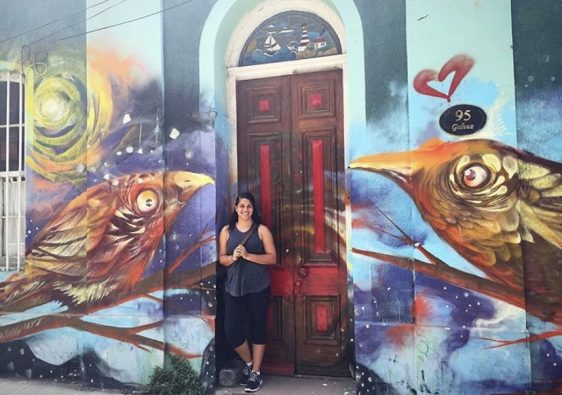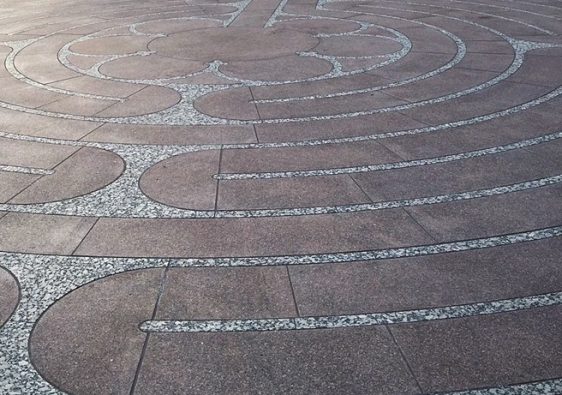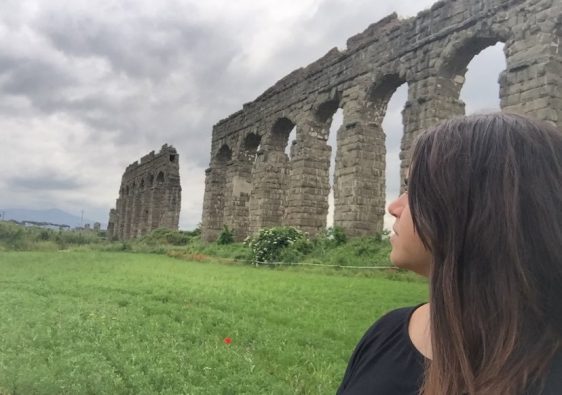On November 8, 2018 columns of smoke veiled the sun as the Camp Fire consumed the town of Paradise, California. It destroyed the town, taking 11,000 homes, 85 lives, and resulted in the loss of the Gold Nugget Museum, which housed mining, military, and Indigenous items of cultural and historic significance which were the pride of the community. I had put off visiting this museum near my hometown of Quincy for years, always assuming I could do it later. The realization that it is now too late has made me think about some of my favorite heritage sites, many of which have played a large part in my development and identity since childhood, and the threat that more frequent wildfire poses to them.
During catastrophic wildfires the priority is to focus on immediate threats, like protecting life, followed by property, and rightly so. However, the loss of cultural heritage sites can also have devastating long term impacts. When a home burns often there is great loss of personal heritage, including family heirlooms, photos, and memories associated with the home itself. When a cultural heritage site is destroyed there is a similar irreplaceable loss, but it is a loss to a community’s collective story and cultural heritage. These sites play a key role in the development of our identity and our ability to teach future generations about our history. Their preservation helps us to continue traditions and create shared cultural memory. They can also memorialize painful pasts and encourage important conversations about improved future actions, such as the Woolworth Building in San Antonio, Texas with conversations around Black history, civil rights, and desegregation in the United States or the Citadelle Henry in Milot, Haiti with conversations about colonization, slavery, and the Haitian Revolution.
Cultural heritage sites play an important role in the global community’s history, but in recent years they have been increasingly threatened by the severe impacts of climate change, one of which is the rise in the number and intensity of wildfires. As the earth heats up many of our built environments become more dry and more flammable, leading to larger fires and longer fire seasons. In 1966 the United States reportedly had wildfires that covered 4,574,389 acres. This number was exponentially more by 2017, with fires across 10,026,086 acres. This trend can be seen in countries around the world, from Angola, to Brazil, to China, and Australia, and the threats these fires have to cultural heritage sites globally can be irreparable.
For Californians this problem hits close to home. Today the annual wildfire burned area in California is 5 times as large as it was 40 years ago. Just in the last decade Californians have experienced the 10 largest wildfires in the state’s recorded history. In 2017, the Sepulveda Fire threatened the Getty Center and the Reagan Library. In 2018, the Woolsey Fire destroyed the Sepulveda Adobe and much of Paramount Ranch. Just last week, the CZU Lightning Complex Fires decimated Big Basin Redwoods, which is California’s oldest state park. It housed historic sites such as it’s 1936 headquarters built by President Roosevelt’s Civilian Conservation Corps, the nature museum, and more, all of which are lost or assumed lost at this time.
In the last two years Northern California specifically has experienced historically devastating fires. The 2018 Carr Fire, with it’s terrifying 1,000 foot fire tornado, in the Redding and Whiskeytown areas resulted in 8 deaths and damages to the Shasta State Historic Park and Museum. Most tragic of all, the 2018 Camp Fire in Paradise was the deadliest wildfire in California history: 85 lives lost, 19,000 structures destroyed, and 50,000 people displaced. Multiple of my friends and loved ones lost their homes and much of their personal heritage that day, and the larger community lost irreplaceable cultural heritage sites.
Particularly in rural areas where sites and communities are surrounded by forests, cultural heritage sites are at high risk. In Plumas County, fire occurrence, size, duration, and intensity has also increased. The county’s heritage is built on its relationship with the surrounding forests. The Maidu are the original Indigenous inhabitants of the area, and some of their cultural heritage sites, including roundhouses and dance sites, have been preserved and are used in contemporary ceremonies. The Maidu lived off the land for thousands of years before pioneers moved to the region in search of gold in 1850. The Western Pacific Railroad was built in 1909 to allow the timber industry to expand, and today the Feather River Canyon is a National Scenic Byway, bringing recreational tourists to the area to enjoy these forests. Today in Quincy, CA, the seat of Plumas County, two of the biggest employers are the USDA Forest Service and the Sierra Pacific lumber mill. Most locals still depend on forest products for their livelihood, my family included.
Historically, fire has always been a risk for Plumas County. Three iterations of the Plumas Hotel in downtown Quincy have been destroyed by fire since 1855. During the summers of 2010 and 2011, I worked for the Forest Service’s Mt. Hough Ranger District archaeological team. Often our work would be to survey cultural heritage sites in burned areas a few years after a major fire had gone through to determine what damage had been done to the sites. I remember sitting on the ground, surrounded on all sides by miles of desolate, black, burnt trees. I remember being covered in ash from head to toe, trying not to get it on my peanut butter and jelly sandwich, and feeling helpless because I was only able to record the sites in the aftermath. In 2013, four historic downtown buildings and one of the two iconic murals that welcomed visitors to Quincy were lost in a fire. This was a devastating blow to the town’s built history, as well as one of the primary areas for cultural tourism and economic activity. A few weeks ago in July 2020, a fire downtown destroyed four buildings, including the West End Theater costume storage space which housed the community’s collection of historical costumes.
Despite all of this loss, Plumas County is still home to many important heritage sites. For example, Portola is home to the James (Jim) Beckwourth Museum. Jim Beckwourth was a Black explorer who was born enslaved in Virginia in 1789. He is credited with “discovering” a pass through the Sierra Nevada mountains, known as the historic Beckwourth Trail. One of the only Black historical figures in the area, Beckwourth’s role in history allows Black students to see themselves in local history, as well as provides opportunities for others to learn about Black history and its impact relative to their own cultural heritage. The Chinese Cemetery in Quincy reflects the area’s Chinese heritage and their contributions to the area’s gold mining past. It also allows for deeper conversations around racism, xenophobia, and segregation in our history. The Plumas County Museum and Variel House are both preservation and education spaces that house items from the Maidu, gold miners, Chinese immigrants, the timber and railroad industries, and more. The museum partners with local schools to create experiential learning opportunities for students. Other cultural heritage sites remaining include the Western Pacific Railway Museum in Portola, Johnsville’s Mohawk Stamp Mill, the 1857 Plumas County Original Pioneer Schoolhouse, the Elizabethtown archaeological site, the Keddie Wye Train Crossing, the 1905 Historic Quincy Schoolhouse, the historic Town Hall Theatre, and more.
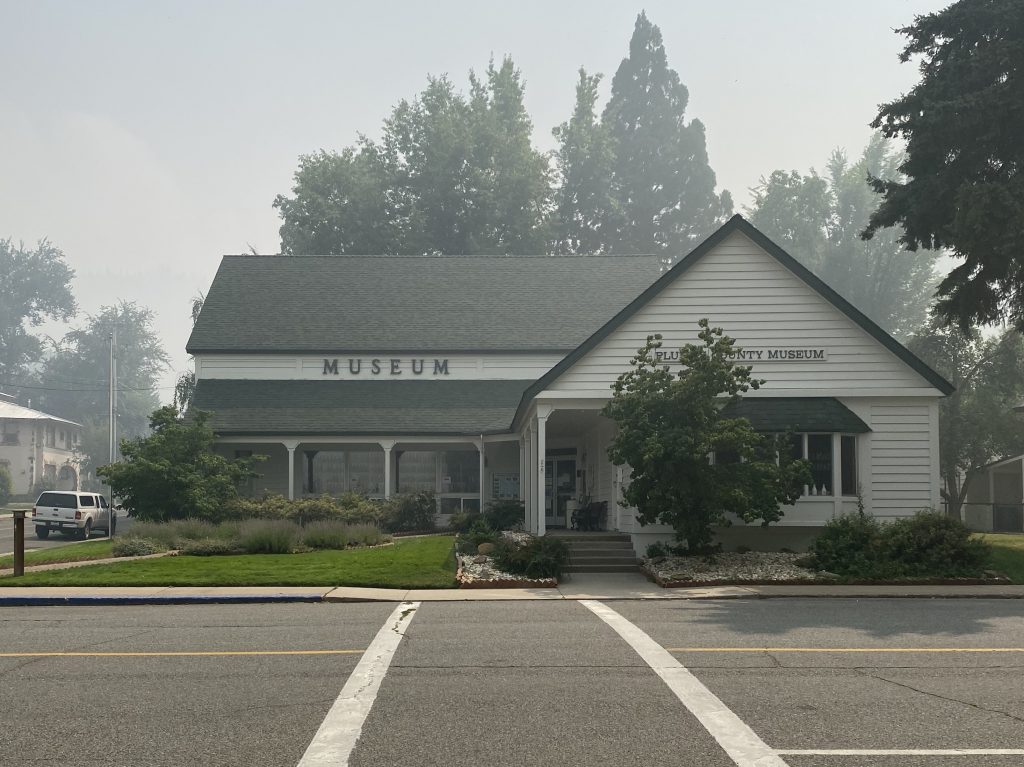
The Plumas County Museum 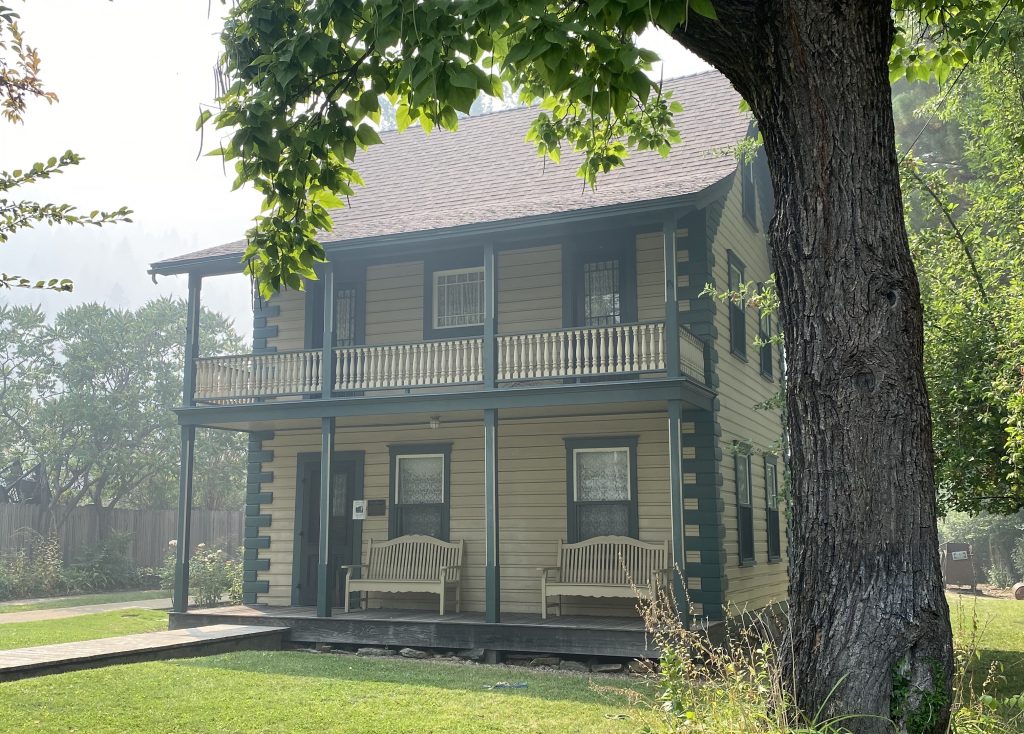
Variel House 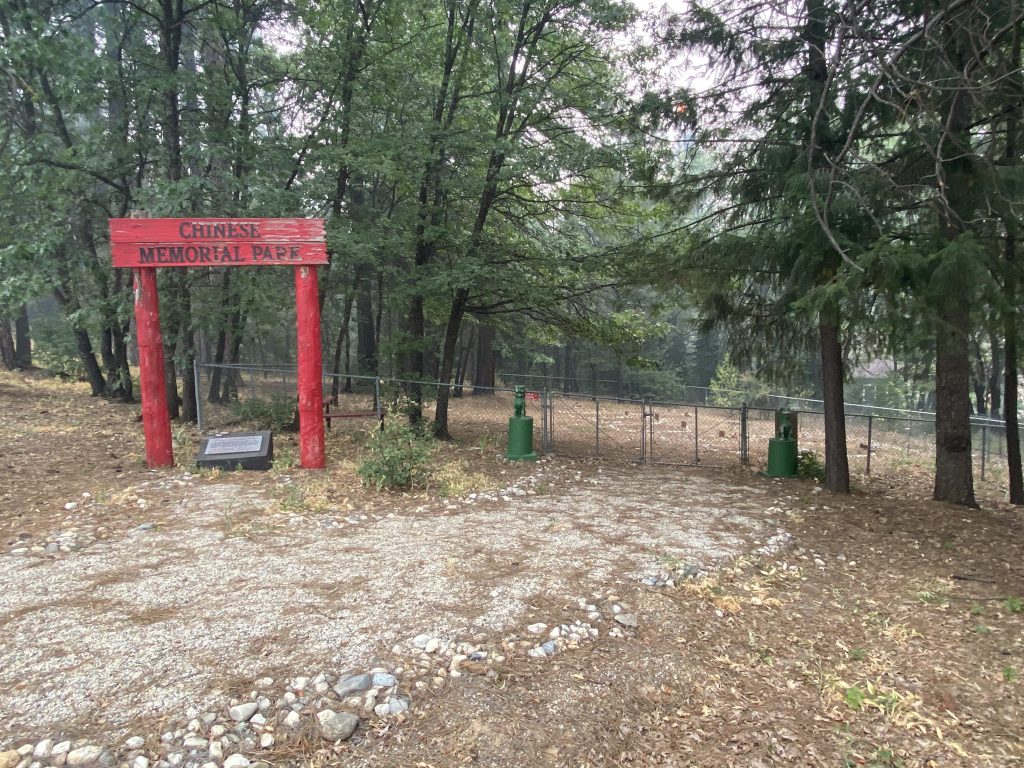
Chinese Cemetary 
Downtown Quincy, CA 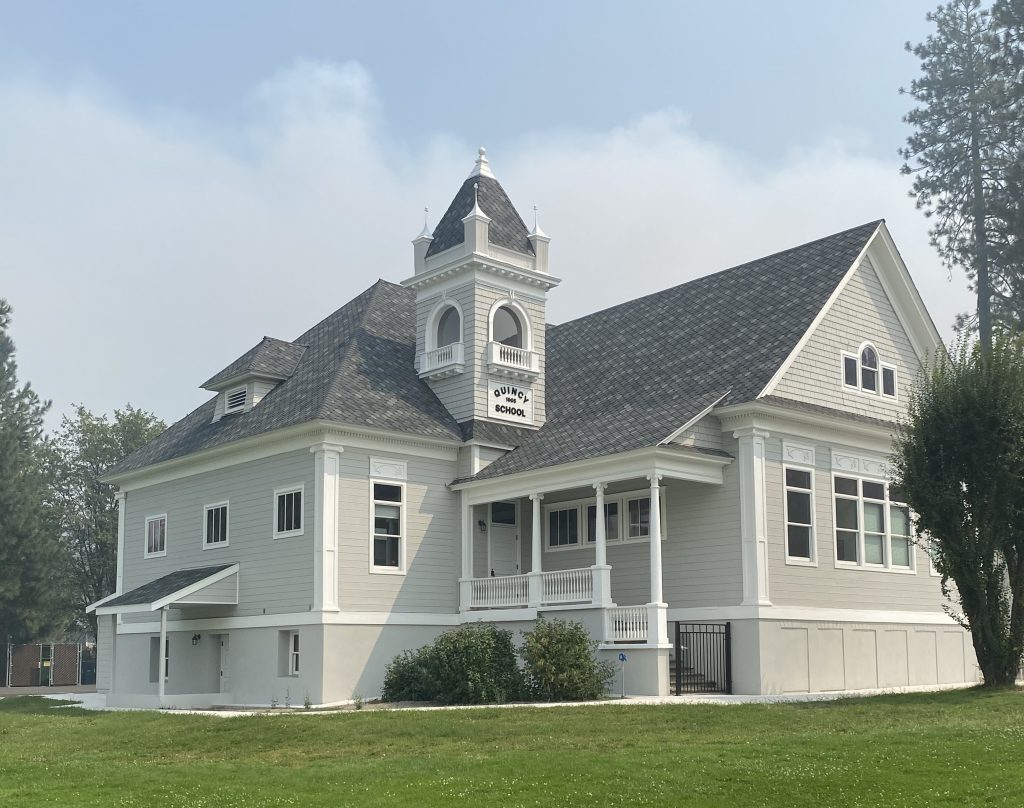
1905 Historic Quincy Schoolhouse
Preservation efforts are in progress and measures are being taken to reduce the risk of fire to these sites, as heritage protection is increasingly being incorporated into fire management plans. However, most of these measures are ineffective against a major wildfire. At the end of the day the resources small, rural communities have to protect their cultural heritage against the impacts of climate change are limited, especially when compared to large, urban sites like the Getty Center in Los Angeles. The rural inequities are stark. Large scale change would need to happen in order to safeguard these cultural heritage sites from future fires. Examples of the types of change needed include:
- The prioritization of arts initiatives and sustainable forest management by governments
- Funding for forest fuel reduction from the United States Congress to thin trees and brush treatments
- The revitalization of traditional Indigenous management techniques, like prescribed burning in areas with dense undergrowth
- Legislation regarding greenhouse gas emissions and building codes
- Improvements to our education systems and how we raise awareness of the impacts of climate change, the importance of sustainable tourism, how we teach about both historic and contemporary injustice, and the crucial role that cultural heritage has on modern communities on a global level
As I write this, my parents are in the process of evacuating from my childhood home due to another wildfire. This is the second time they’ve evacuated due to fire in the last three years. The terror I feel at potentially losing the house we’ve made so many memories in and which is so much a part of me is paralyzing. Twenty years of memories and personal heritage could be gone any minute. Also, if the fire makes it over the next hill, not only will hundreds from our community lose their homes and their personal heritage, but years of historic sites, from the oldest schoolhouse in the county to the high school where I developed a passion for world history, will be lost. We are in a period of large scale change, not only in California but around the world. California is just one of many obvious examples of where the effects of climate change are destroying irreplaceable heritage sites.
As we have battled these fires, I’ve heard a lot of people talking in past weeks about how this is “2020’s fault.” To be clear, 2020 has been awful worldwide, from COVID-19, to white supremacy and police brutality, to locust, deadly explosions, and massive fires. The year 2020 will be remembered as a historically tragic year. But 2020 is not to blame for the loss of cultural heritage sites due to wildfires. To blame these losses on something as innocuous as chance ignores the larger issue of climate change and our responsibility in it.
Fire has been a natural part of our ecosystem and forest health for thousands, if not millions of years. It came long before humans started building monuments, and if we are not careful it may be here long after we have no more monuments left to burn. We, as global citizens, have a responsibility to preserve cultural heritage sites that remain for future generations. It is my hope that these future generations will have the tools to develop a holistic understanding of the world and their place in it. If we are to achieve this we need to collectively prioritize climate change solutions, sustainable practices, and the preservation of underrepresented heritage. It is our responsibility to ensure the continuation of both local and global heritage. It is also our responsibility to facilitate experiential learning opportunities focused on diverse places, cultures, memories, and traditions. If we are to address the global challenges facing this and future generations, those stories need to be shared. Lastly, it is our responsibility to protect the heritage that our ancestors afforded us, to develop intercultural knowledge to better understand ourselves and others, and to create spaces where cultural heritage sites can thrive.

